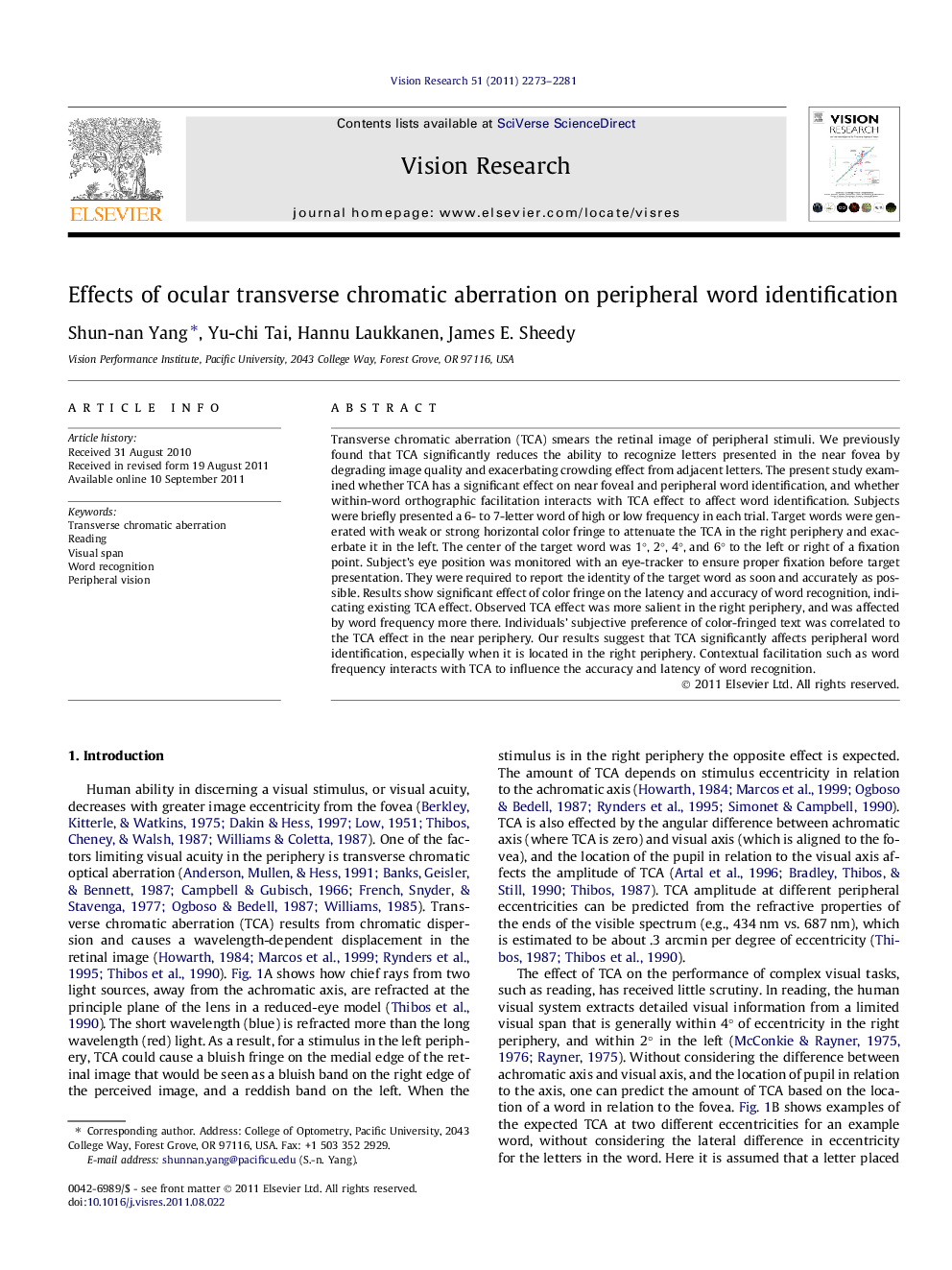| Article ID | Journal | Published Year | Pages | File Type |
|---|---|---|---|---|
| 4034110 | Vision Research | 2011 | 9 Pages |
Transverse chromatic aberration (TCA) smears the retinal image of peripheral stimuli. We previously found that TCA significantly reduces the ability to recognize letters presented in the near fovea by degrading image quality and exacerbating crowding effect from adjacent letters. The present study examined whether TCA has a significant effect on near foveal and peripheral word identification, and whether within-word orthographic facilitation interacts with TCA effect to affect word identification. Subjects were briefly presented a 6- to 7-letter word of high or low frequency in each trial. Target words were generated with weak or strong horizontal color fringe to attenuate the TCA in the right periphery and exacerbate it in the left. The center of the target word was 1°, 2°, 4°, and 6° to the left or right of a fixation point. Subject’s eye position was monitored with an eye-tracker to ensure proper fixation before target presentation. They were required to report the identity of the target word as soon and accurately as possible. Results show significant effect of color fringe on the latency and accuracy of word recognition, indicating existing TCA effect. Observed TCA effect was more salient in the right periphery, and was affected by word frequency more there. Individuals’ subjective preference of color-fringed text was correlated to the TCA effect in the near periphery. Our results suggest that TCA significantly affects peripheral word identification, especially when it is located in the right periphery. Contextual facilitation such as word frequency interacts with TCA to influence the accuracy and latency of word recognition.
► Transverse chromatic aberration (TCA) varies at different retinal eccentricities. ► Color fringe was manipulated to measure TCA effect in the left and right peripheries. ► Word recognition was facilitated by color fringe in the right but not left periphery. ► Word familiarity attenuated measured TCA effect.
